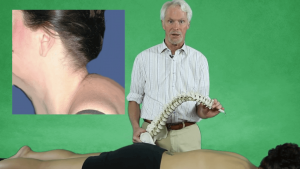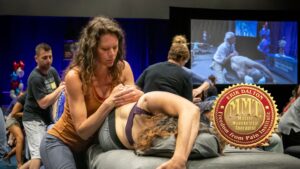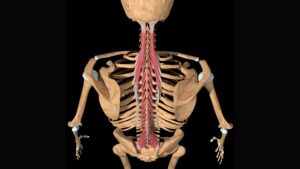One of the keys to becoming a highly successful manual therapist, especially if you work in the more clinical or medical realm of bodywork, is to become skilled at addressing the core causes of your clients’ pain – especially manual therapy techniques for neck pain. By taking this approach, you can strive to offer lasting relief from pain and functional limitations, rather than simply soothing the client’s symptoms for a brief period before the pain pattern takes hold once again. Consider using your investment in continuing education as a way of learning the most effective methods of manual therapy for the issues that affect each region of the body. For example, you may wish to seek out quality continuing education on the topic of manual therapy techniques for neck pain in order to secure the best possible skills for serving your client base.
If you have been working in the field of manual therapy for any length of time, it probably comes as no surprise that neck pain is “frequent flyer” as far as common client complaints. Although most professional massage therapists and bodyworkers possess basic manual therapy techniques for neck pain, becoming a highly successful manual therapist means taking those skills to a whole new level of efficacy via advanced training. A continuing education program such as Erik Dalton’s “Home Study for Head, Neck and Upper Body” will provide the in-depth instruction you need in order to properly assess and effectively address a wide range of issues related to neck pain, as well as the core causes of pain related to the head and other specific areas of the upper body.
Learning manual therapy techniques for neck pain
In YouTube clips pulled from Dalton’s “Home Study for Head, Neck and Upper Body” CE program, you can see how this popular educator and longtime practitioner uses live demonstration, coupled with skeletal models and inset animation, to quickly and easily teach his viewers manual therapy techniques for neck pain, head pain and pain in other parts of the upper body. For example, a short clip called “Treating Neck and Dowager Hump Pain” pinpoints a core cause of dowager’s hump and shows students how to go about addressing this issue with their clients. With a better understanding of what’s going on underneath and around a dowager’s hump, the application of techniques to help alleviate this condition can be performed with greater confidence and efficacy.
During this segment on addressing a dowager’s hump, Dalton explains that this is a common problem in our society, especially among the elderly, but also in younger people as well, from time to time. Using a spinal model, along with anatomical animations, he shows viewers that this issue often stems from the head being pulled forward by gravity, so that the superior vertebra glides forward on its inferior neighbor and gets stuck there. In other words, the facets are stuck open, and the head cannot come back up into extension because these facet joints won’t close. For those who choose to enroll in “Home Study for Head, Neck and Upper Body” CE program, you will have the opportunity to learn Dalton’s technique for closing these facet joints.
Gain expertise in manual therapy techniques for neck pain

Erik Dalton explains that neck pain often stems from the head being pulled forward by gravity, so that the superior vertebra glides forward on its inferior neighbor and gets stuck there.
Viewing short clips such as the one described above offers prospective students a chance to “test drive” Dalton’s top-notch home-study programs before purchasing one of them for their next foray into continuing education. However, there is no doubt that it is hazardous to attempt to perform manual therapy techniques for neck pain or any other client condition without first completing the full continuing education course. A collection of brief YouTube clips can serve as a wonderful preview to Dalton’s popular programs — but these clips are no replacement for actually taking the classes.
Those manual therapists who do choose to enroll in “Home Study for Head, Neck, and Upper Body” will not only learn the step-by-step protocol for performing Dalton’s Myoskeletal Alignment Techniques (MAT), but they also will receive the elite credential of Certified Myoskeletal Therapist. This certification lets clients and employers know that you have received official MAT training and are equipped to offer this popular form of hands-on pain management. To learn more about this 22 CEU program, visit our Home Study for Head, Neck and Upper Body page.









